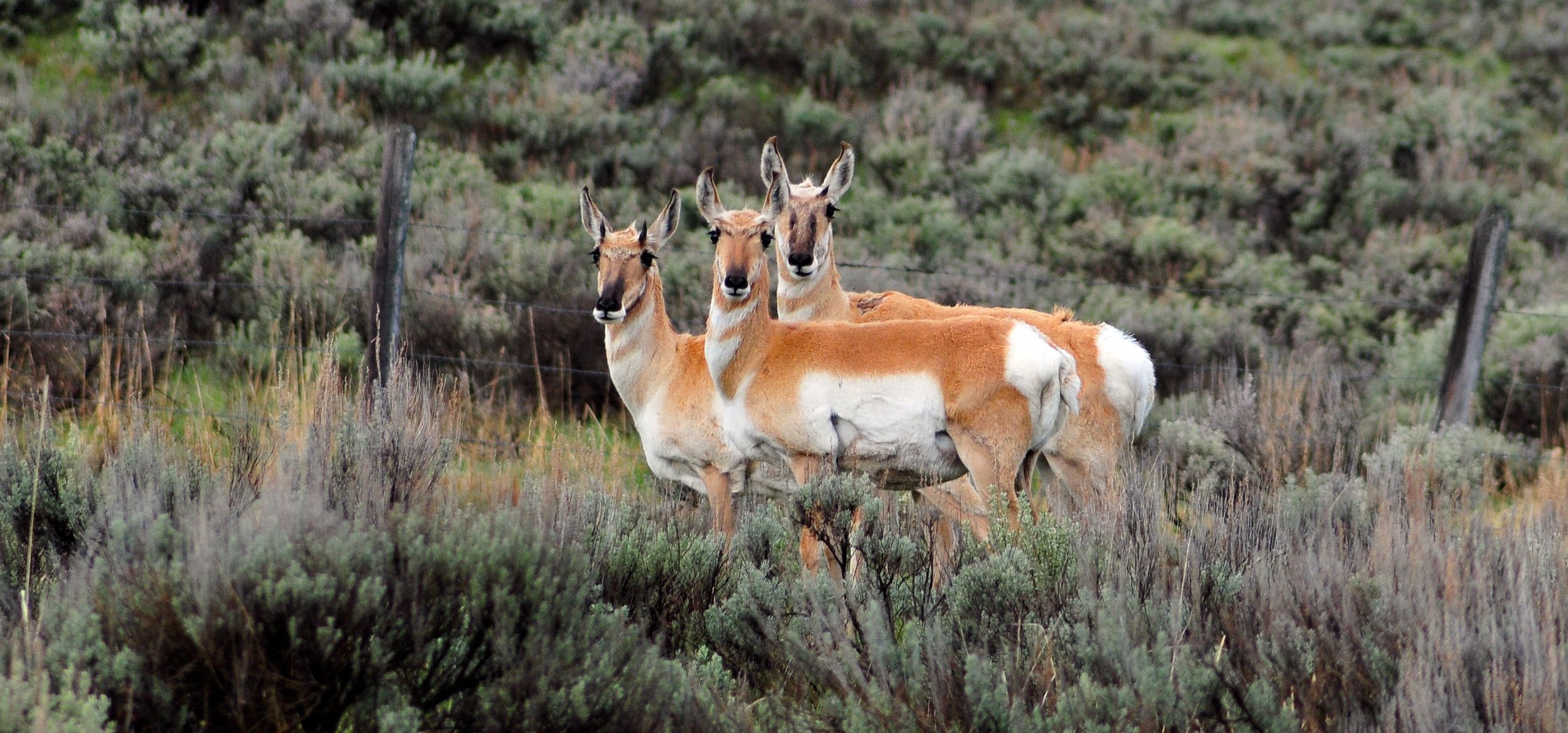
WILDLIFE
You are not alone in your concern for Montana’s wildlife. A recent poll of 500 registered voters in Montana shows widespread backing for the conservation of wildlife, including protection of migration corridors for big game species. The Pew-commissioned survey, conducted in early November 2021 by the research firms New Bridge Strategy and FM3, found that 88% of respondents view wildlife as important to their quality of life in the state and that 83% believe that wildlife is important for the state’s economy.
Studies Show
The Raynolds Pass area is considered the core habitat for migratory elk herds moving between Yellowstone Park and Madison Valley. (Brock et al. 2006, Appendix B). The preservation of habitat and migratory routes is crucial to maintain the important economic and cultural resources elk provide to the valley.
Raynolds Pass is a critical “pinch point” migratory corridor for pronghorn moving between their summer range near Henry’s Lake, Idaho, and winter range in the Madison Valley. (Brock et al. 2006, Appendix B, Cunningham, 2022).
Studies indicate big game migrations can be negatively affected and habitat use avoided by as little as 3% disturbance of surface area, regardless of spatial scale. (Sawyer et al. 2020).
Even in extensive grassland landscapes, infrastructure and human activities can affect the distribution and movements of pronghorn. As their density increases, roads and fences have had a negative effect on populations of several species and various ecological processes. (Trombulak and Frissell 2000).
In rural western North America, effective land-use planning is one of the most important needs for wildlife conservation. (Brown et al. 2005). Human activities and infrastructure can have a profound influence on wildlife distribution and movements. Urban sprawl and exurban settlements are expanding urban edges and leapfrogging of residential development and commercial zones into surrounding rural landscapes. Together, they are leading causes of biodiversity loss in North America. (Hansen and Brown 2005; Baldwin et al. 2007).
Endangered Species and Species of Interest
The habitat between Papoose Creek and the Montana/Idaho border supports an amazing array of species, several of which are classified as “Endangered” or “Species of Interest”. It is important to note that the habitat of sensitive species supports lots of other species which can be described via “umbrella scores”. For example, a grizzly has an umbrella score of 300, meaning the same habitat for a bear also benefits 300 other animals. – Craighead Institute, 2015, Frank Lance Craighead
